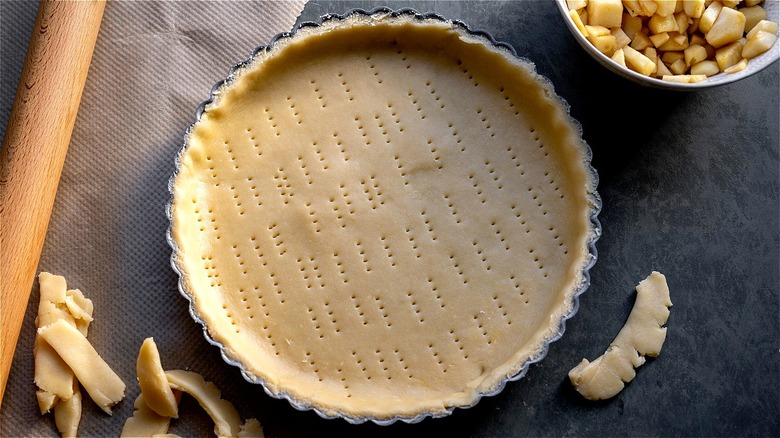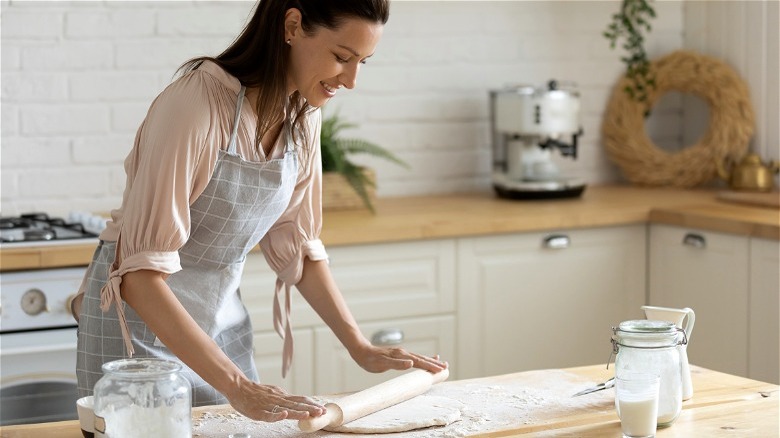Why You Should Always Chill Pie Dough
With the holidays right around the corner, it's important to have all of the Thanksgiving dinner hacks fresh in your mind, and that includes tips for those beloved desserts. After all, with 39% of Mashed survey respondents ranking pumpkin pie as the best Thanksgiving treat, you need to know what you're doing when it comes to creating that perfectly flaky pie crust.
Sure, you could buy a store-bought pie crust. But even with all of the additional holiday stress, YouGov found that 69% of Americans prefer some degree of home cooking when it comes to festive pies. Whether you plan to make a standard pumpkin pie or an autumnal apple pie, having the perfect crust makes all the difference.
You're likely also going to be spending more on this year's holiday refreshments, so there's less room for error in the cooking process. According to The Wall Street Journal, turkey prices are projected to be higher this year. And Americans are still feeling the effects of high grocery store prices, notes ABC News. All the more reason to go into the Thursday celebration armed and ready with all the secrets to crafting the perfect pie crust, right? Wilton test kitchen manager Elizabeth Nelson shared with Mashed why chilling pie dough is such an important step. "While it can be a little more difficult to roll when it's cold, making sure the butter is nice and cold is what creates the pockets of steam necessary for an extra-flaky pie crust," Nelson says.
The chilling process guarantees flaky layers
Elizabeth Nelson, test kitchen manager at Wilton, says chilling pie dough is crucial to the baking process. And when you're following a pie crust recipe, beyond using the standard flour and water, using cold butter is essential. "Keeping your ingredients chilled is one of the most important aspects of making pie dough," Nelson says. "That includes the butter and ice water, but can also include the flour or your tools if you're in a warm climate."
If the fat falls to room temperature when added to the dry ingredients, "it can be easier to over-mix the pie dough and lose the flaky layers in the crust," she explains. Using European butter? Chef Sohla El-Walley suggests cutting it up and freezing it before incorporating it into the crust due to its higher fat content, per Bon Appétit.
While with any pie crust, you can level up and follow The Pioneer Woman's trick for flaky pie crust, chilling the dough after mixing for "at least 1 hour" should do the trick, Nelson says. She adds that you can freeze extra dough for a later date, but be sure the plastic or beeswax wrap "is directly on the surface of the pie dough to keep it from drying out." She also suggests adding an additional layer of plastic to prevent freezer burn. Now that you know the importance of chilling pie dough, you can prepare your future dinner guests for some flaky pies this holiday season.

